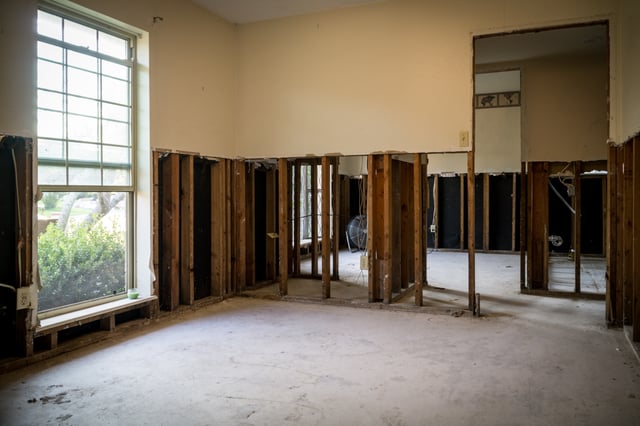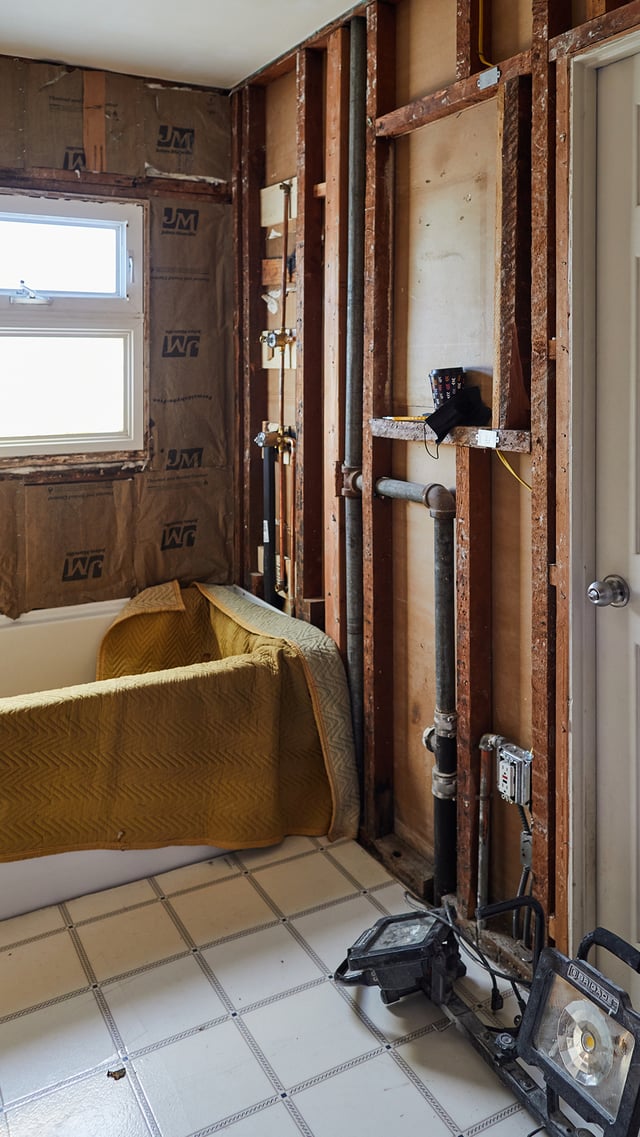
Basement
Small Basement Remodeling Ideas
12.23.2025
Our New Year savings event is here: Get up to $6,500 off your project today (terms apply).


In This Article
Floods can be devastating, leaving homes in ruins and homeowners overwhelmed by the daunting task of rebuilding. In the aftermath of such a disaster, it's essential to stay calm and take systematic steps to restore your home. Renovating after a flood requires careful planning and consideration of various factors. In this article, we'll guide you through the essential steps to take and things to consider when embarking on the journey of post-flood home renovation.
Before diving into renovation efforts, prioritize safety. Inspect your home thoroughly to identify potential hazards like electrical damage, gas leaks, or structural instability. If you are unsure about the safety of your property, consult with professionals and get the all-clear before proceeding.
Notify your insurance company as soon as possible. Document the damage with photographs and videos, as this evidence will be crucial during the claims process. Be sure to understand your insurance policy's coverage and limitations, as this will determine the extent of financial assistance you can expect.
Hire a qualified professional, such as a structural engineer or a home inspector, to evaluate the damage. Their expertise will help you understand the full scope of the renovation required. This assessment will also assist you in creating a detailed plan and budget for the restoration.
A well-thought-out renovation plan is essential for a successful restoration. Work with an architect or contractor to create a detailed plan that addresses the structural repairs, electrical systems, plumbing, and any other components that need attention. Your plan should also include a timeline and budget.
Choosing the right contractors is crucial for a smooth renovation process. Look for licensed, experienced professionals with a track record of handling flood-related repairs. Obtain multiple quotes and check references to ensure you are making an informed decision.
Depending on the scope of your renovation, you may need permits from your local government or building authorities. Failing to secure the necessary permits could lead to legal complications down the road. Check with your local authorities to ensure you comply with all regulations.
Mold and mildew can quickly develop in a water-damaged environment, leading to health hazards and further structural damage. It's essential to address water damage promptly. Remove and replace any wet insulation, drywall, flooring, and other affected materials. Properly dry and dehumidify the area to prevent mold growth.
Structural damage can compromise the safety and stability of your home. Repairing or reinforcing damaged foundations, walls, and roof structures should be a top priority. Consult with professionals to ensure these repairs are done correctly.
Consider implementing flood prevention measures to reduce the risk of future damage. Elevating your home, installing flood barriers, and improving drainage systems are just a few options to explore. Consult with experts to determine the most suitable solutions for your property.
Once the structural and safety issues are addressed, you can move forward with the cosmetic aspects of the renovation. This may include replacing flooring, painting walls, installing new fixtures, and restoring the aesthetics of your home. Take this opportunity to make improvements that enhance your home's resilience and functionality.
Throughout the renovation process, maintain meticulous records of expenses, contracts, permits, and communication with contractors and insurance companies. This documentation will be valuable for future reference, potential tax deductions, or for resolving any disputes that may arise.
Renovating your home after a flood is a challenging and emotional journey, but it is possible to rebuild and create a safe, comfortable living space once again. Prioritize safety, consult experts, and take your time to plan and execute the restoration carefully. By following these steps and staying organized, you can turn a devastating situation into an opportunity to create a more resilient and beautiful home.
Disclaimer: The information provided in this article is for general informational purposes only and should not be considered legal advice. Laws and regulations regarding insurance claims and property damage can vary widely by jurisdiction and individual circumstances. It is essential to consult with a qualified legal professional or contact your insurance company directly for personalized advice and guidance regarding your specific situation. This article is not a substitute for professional legal or insurance advice, and the author and publisher disclaim any liability for actions taken or not taken based on the information provided herein.

Written by Block Renovation

Renovate confidently with Block
Easily compare quotes from top quality contractors, and get peace of mind with warranty & price protections.
Thousands of homeowners have renovated with Block

4.5 Stars (100+)

4.7 Stars (100+)

4.5 Stars (75+)

Basement
Small Basement Remodeling Ideas
12.23.2025

Basement
Basement Ceiling Options: Ideas, Costs & Solutions
08.21.2025

Contractors
Half Bathroom to Full Conversion: Costs, Permits & Designs
08.02.2025

Process
Gutting a Bathroom: What It Entails, Costs & Timeline
07.15.2025

Remodeling
Does Homeowners Insurance Cover Renovations?
05.22.2025
Renovate confidently